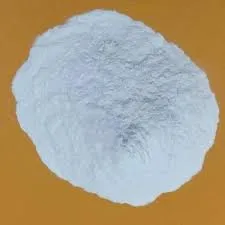
Nov . 10, 2024 19:16 Back to list
Best Methods for Dissolving HPMC in Water Effectively
How to Dissolve HPMC in Water A Comprehensive Guide
Hydroxypropyl methylcellulose (HPMC) is a cellulose ether widely used in various industries, including pharmaceuticals, food, and construction. Its unique properties, such as thickening, emulsifying, and film-forming capabilities, make it a valuable ingredient in many formulations. Understanding how to properly dissolve HPMC in water is essential for achieving desired results in your applications. In this article, we will provide an in-depth guide on how to dissolve HPMC effectively.
Understanding HPMC
Before diving into the dissolution process, it's important to understand what HPMC is and its characteristics. HPMC is a non-ionic polymer derived from cellulose. It is soluble in both hot and cold water, but its solubility can be influenced by factors such as temperature and concentration. HPMC is often used as a stabilizer, thickener, and protective colloid in various formulations.
Factors Affecting HPMC Solubility
1. Temperature The solubility of HPMC increases with temperature. Dissolving HPMC in warm or hot water can significantly speed up the process. 2. Concentration The amount of HPMC you are trying to dissolve will also affect the process. Higher concentrations may require more time and effort to dissolve completely. 3. Water Quality The purity and mineral content of the water may impact the solubility of HPMC. Use distilled or deionized water for optimal results.
Step-by-Step Guide to Dissolving HPMC in Water
1. Gather Your Materials - Hydroxypropyl methylcellulose (HPMC) - Distilled or deionized water - A mixing container (preferably a beaker) - A mechanical stirrer or whisk - A thermometer (for temperature control)
2. Measure the HPMC Weigh the desired amount of HPMC you plan to dissolve. The typical concentration for solutions ranges from 0.5% to 5%, depending on your specific application requirements.
3. Heat the Water If you prefer to use warm water to expedite the process, heat your distilled or deionized water to a temperature range of 60°C to 80°C (140°F to 176°F). Avoid boiling the water, as this may affect the polymer structure of HPMC.
how to dissolve hpmc in water

4. Add HPMC to Water Gradually sprinkle the HPMC powder into the warm water while continuously stirring the mixture. This step is crucial, as adding HPMC too quickly can lead to clumping.
5. Stir the Mixture Use a mechanical stirrer or whisk to mix the solution thoroughly. Continue stirring for at least 10-15 minutes or until the HPMC is completely dissolved. You may notice that the solution begins to thicken as the polymer hydrates.
6. Cool Down After the HPMC has fully dissolved and the solution has reached a uniform consistency, allow it to cool down to room temperature. This step is important as cooling can further enhance the stability of the solution.
7. Check for Gelling Depending on the concentration, the solution may begin to gel as it cools. If necessary, you can adjust the viscosity by adding more water or HPMC as needed for your specific application.
Tips for Successful Dissolution
- Avoid Clumping To prevent clumping, always sprinkle the HPMC slowly and mix continuously. Adding HPMC all at once can create lumps that are difficult to dissolve. - Patience is Key Ensure you stir the mixture long enough for complete dissolution. Rushing this step can lead to imperfections in your final product.
- Adjust pH if Needed Depending on your application, you may need to adjust the pH of your solution. HPMC is compatible with a range of pH levels, making it versatile for various formulations.
- Store Properly If you do not use the dissolved HPMC immediately, store it in a cool, dry place in a sealed container to prevent contamination and degradation.
Conclusion
Dissolving HPMC in water is a straightforward process if you follow the proper steps and considerations. By understanding the factors that influence solubility, you can ensure a smooth and effective dissolution. Whether you are using HPMC for pharmaceutical, food, or construction applications, mastering this technique will enhance your formulation efforts and contribute to the quality of your final products.
-
Versatile Hpmc Uses in Different Industries
NewsJun.19,2025
-
Redispersible Powder's Role in Enhancing Durability of Construction Products
NewsJun.19,2025
-
Hydroxyethyl Cellulose Applications Driving Green Industrial Processes
NewsJun.19,2025
-
Exploring Different Redispersible Polymer Powder
NewsJun.19,2025
-
Choosing the Right Mortar Bonding Agent
NewsJun.19,2025
-
Applications and Significance of China Hpmc in Modern Industries
NewsJun.19,2025







